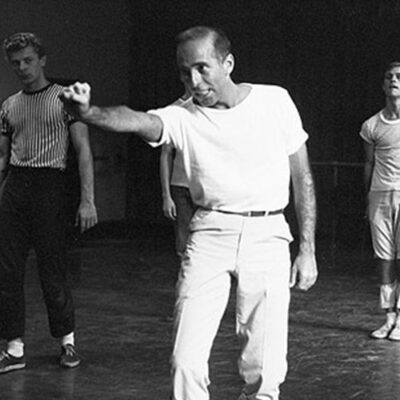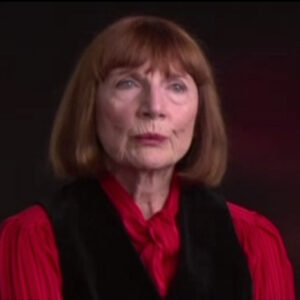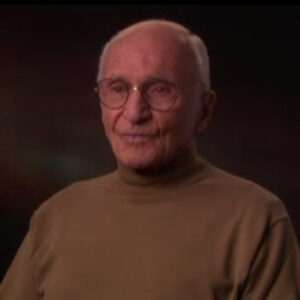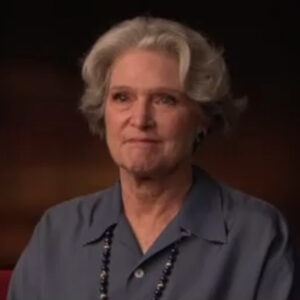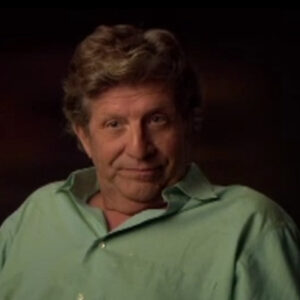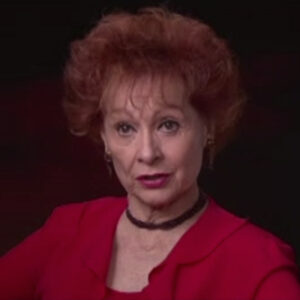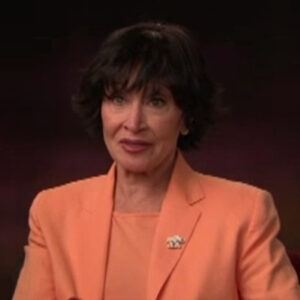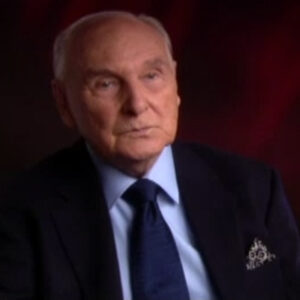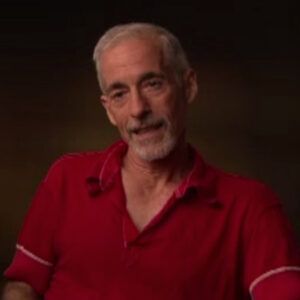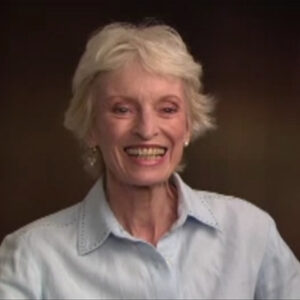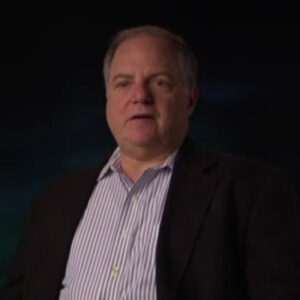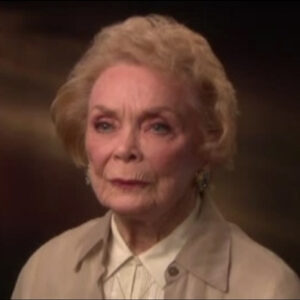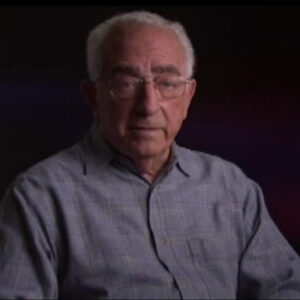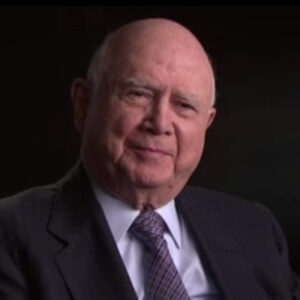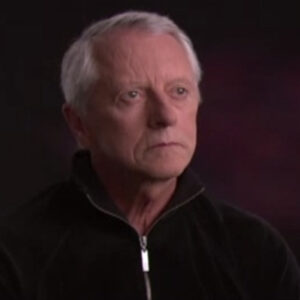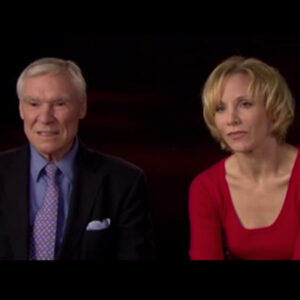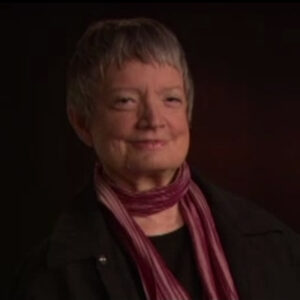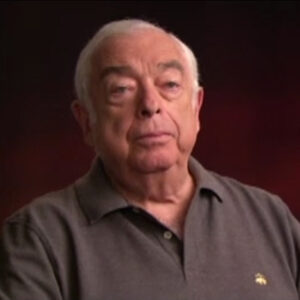Speaker So tell me, if you would, the circumstances of your meeting, Jerry Robbins?
Speaker I was given a call to come down to a theater to meet with George Abbott, and Mr Abbott said he had a show that he wanted me to do maybe. And when I got down to the theater, wherever they were rehearsing something else, Mr Abbott was there and SEMICON and Julia Stein were there and I became good friends with Sammy. I knew Julie fairly well after that, but Mr Abbott said to me, he said, you would be perfect to be the mother in this show. And I said, Well, Mr Abbott, I’m I’m in my early 20s. He said, it doesn’t matter. He said in this show all the songs and dances are the best thing you should do them. I said, But the boy who plays my son is only about seven years younger than I am. He says it doesn’t matter. I want you to do the show. Well, you don’t say no to Mr Abbott. You don’t argue with him about how young this is going to be. And so when I heard the score, I said, yes, I’d like to do the show. Of course I was out of a job. You know, you take anything when you’re really desperate. But I was trying to be a little bit standoffish. Do you want me to hire me? Which they did. And I loved the show. Now, my first meeting with Jerry Robbins was when he was already working on the show. He was doing one of the big numbers. I forget what it was. And I had heard, you know, a lot of gossip. Whoever is going to be on the show and on the show and with the show, I had heard that Mr Robbins was difficult, that he always picked one person to pick on, that he would take one person and really ostracize them or make the life miserable for them. He was an absolute doll. We got along like like he was my family. I loved him. He loved me. We just got along great. I told him right up front. I said, Mr Robbins, I and he said, Please call me Jerry, I’m sorry. And I said, And I’m Nan. So that was it. After that I said, Jerry, I have a major problem which I’ve had in all of my shows, all of my other choreographers that I’ve worked for. I cannot turn right. I have a balance problem and it’s never bothered anybody before. I said, is that going to be a problem for you? You said only if it’s a problem for you. And I said, well, when you set some of the numbers that I’m going to do, please remember that I can’t turn right. He said, well, if somebody holds on to you, can you turn right? I said, yes, I can do that. I may look a little woozy, but it doesn’t matter. He said, no, I we’ll take care of it. Don’t worry. I mean, I loved him. He was so sweet and so dear. Now, one of the very first numbers that we did was the Mack Senate ballet. And originally all of the cast was in that. No, I mean, everybody, Phil Silvers and myself and Jack Macaulay and Mike Tyson and and Lois Lee and all the people in the show who had parts were in the entire Maxon of ballet. So what happened was the first full dress run through, not without costumes, but I mean, just run through. We were all on the stage and Mr Abbott was out front with everybody. And it’s on we’re on a stage someplace, some theatre. And we started, you know, with everybody running in and out of all those crazy doors and feel the Jerry took somebody, took somebody, took field service aside to teach him how to do music count. And they said it’s it’s one, two, three, four, two, two, three, four, three, two, three, four, four, two, three, four. He feels I got it. So now you were going in and out of the doors. And when we were about halfway through, when we’re about halfway through the running in and out of the doors, things started to go bad because it turned out that this was the way Phil was counting one hundred and twenty one, two, three, four, 122. And he would lose track of where he was, but he was doing pretty nothing fit the music, but he was going through doors on his what he thought was his count and smashing into people. And by the time we got through the first full music run through with everybody going in and out of those crazy barthe doors, people had sprained ankle.
Speaker So shall I start again? Just go back. OK, right.
Speaker So by the time we reached the point of where everybody had gone through all the doors and Phil had run through all the doors wrong, but he’d run through them anyway. There were people with sprained ankles and unconscious. Somebody was unconscious behind one of the doors. We couldn’t open the door at all.
Speaker And Phil came running through and he was forced to carry American flags waving the flag. And Mr Abbott, it was just it was chaos. It was the most disastrous run through you’ve ever seen in your life. Gerry. It was jumping up and. Running up and down the aisles, I mean, he was having a fit, he couldn’t stop it. It was just once we got going through the stores, you went through those doors. Phil ran through the door waving his flag, and Mr Abbott stood up out of his seat and he said, Phil, that was not funny.
Speaker OK, OK, Mr Abbott.
Speaker OK, so Phil was waving his flag, Mr Abbott stood up in the audience and he said, Phil, that was not funny. And Phil was was downcast. I mean, we were picking up bodies all over the floor, but you cannot imagine what a disaster it was. So Jerry took all the principles out of it because he was afraid one of us would get hurt. That be the show? Jerry took everybody out and all the principals out except Phil. And he told the chorus, you know, just watch out for Phil. He’s going to come through a door sometime, somewhere. Just keep your eyes and ears and feet open for suggestions and mayhem. You know, whatever was gonna happen with Phil.
Speaker But as everybody knows, that became probably one of the funniest, most hilarious ballets that have ever been put on any stage anyway. It not only stopped the show every performance everywhere we did it, but it became one of the classic things that Jerry Ramas ever did.
Speaker I’d like to just go back to talk a little bit about Mr Abbott. Tell me who he was for people who don’t know and a lot of people today don’t know. Yes. And what distinguished him as a director.
Speaker George Abbott, oh, what a name that is. He was probably Broadway’s greatest musical director and I would say musical comedy director, because it’s a big, big difference between just musical director and musical comedy director. George Abbott was a saver. He could come in and save a show. He could come in and tell you what was good about his show, what was wrong about his show. When the show was out of town, it was in trouble. Sometimes they would call Mr Abbott and he would come and fix it or tell you what was the matter with it. He was Steven Spielberg and all the great directors we have today were called George Abbott. And those days he was it. And if you get a chance to work for him, I mean, that was maybe one of the high points of your career I was so thrilled to work for. And and I say with because he really took an interest in you personally as a performer and as a person. And when I was doing high button shoes, I said, I only have eight lines in the show. Mr Abbott in the script, I that’s not a big enough part for me. I’ve I just finished playing a lead in a big show. I was a leading bloomer girl. I mean that was a big hit. I said eight lines. He said, we’ll fix it, don’t worry about it, we’ll fix it. Like he said to me, take the mother part because she has all the songs and all of the dances. And he was right.
Speaker He was right. How did. And Jerry.
Speaker What’s happening? I’m just taking it a little oh, changing my.
Speaker Oh, you were bumping the camera with Jerry and added relate.
Speaker Now, my my um, my meeting with Mr Abbott and Jerry, I really don’t remember seeing them ever working together because I worked with Mr Abbott on the script and I worked with Mr Robbins, Jerry Robbins on the dances. And he was really quite careful about everything. He had done a lot of research, I understand, when we were going to do Papa Won’t You Dance With Me, which was the which the other big song which I had on the show, as according to Mr Abbott, take all the songs. Good for you, Papa. Won’t You Dance with Me? Became a big hit. And Jerry Robbins, I understand, had done a lot of research on it. He wanted to see what’s in the song, in the song that SEMICON had the lyrics that said I love the polka well. But Jerry realised that the song was not necessarily just a polka. It was it was the castle walk and Jerry had done some research about the castle walk, but he wasn’t satisfied with just doing reading research. He went out and found or he had somebody find that there were three living teams that had originally done the castle walk, which was a very famous dance at one some time since the show took place in 1913. And that was the era of the castle walk. So Jerry, in his genius way of finding out what was a castle walk, he had the castle of people come in and demonstrate to us these wonderful, sweet old couples. They were just staggering around the stage. But you could see you could see that they that it was there, the original castle, what was in their bones, in their body. And he demonstrated to us what a castle walk should be. And they told us they said, no, you don’t really touch each other that much. You the man sort of holds the lady gently at the waist, but she knows what she’s doing. And the costumes were so tight, the 1913 13 costumes are so tight at the ankles, it was very difficult to do the dance. You couldn’t do a real poker. You could do a little, you could do a little mini steps like that. And they told us that you don’t the woman doesn’t touch the man. She puts her hand on his shoulder like that, just barely touches his shoulder. And Jerry loved all that. Oh, he loved all that minutia. I mean, you could see him saying, yes. He said to me, said, don’t touch him. Put your hand on his shoulder. Oh, yes. And he told Jack McCauley, when we were doing the papa, I want to naturally lead her, but she knows the steps. Do you just go do it? And at one point we had to do the polka. And so I picked up my dress very carefully and was able to step out and do a polka. Jerry just loved all that. He thought that was such great. Great fun to have a simple little dance called Papa Won’t You Dance With Me, become something of an era dancer. You have the pocket had the castle walk. He loved all of that.
Speaker What do you think it said about him that he brought in? He was, after all, the choreographer, but then he brought in people who are expert in a certain kind of dancing. What does it say about.
Speaker I had heard that Jerry was a genius and after having worked with him, I knew that was true. Jerry would never just be the choreographer of a show. He would take everything he could find from every direction, everywhere. And if it had anything to do with helping put together and make what he was doing better, he would use it. He had no no shyness, no embarrassment about being able to use other people’s input. I mean, he was everything. He picked everybody’s brains. Anything you could do that would help help make what he wanted to put on the stage better, he would use it. And it was it was a signal to me that this is a true choreographic genius. He had no no self-consciousness about using whatever anybody could bring to make what he wanted to do the best.
Speaker Terrific.
Speaker You said you didn’t see them, so I won’t I won’t work together about injuries at one point you further, but I think you’ll enjoy this. Julie Stein is quoted as having said that, working for Abbott and Robbins as a collaborator, of course, was like being a great between two pieces of steel. What can you tell us about how Jerry worked with people who were not trained as classical dancers? He was pretty good at making people really look like dancers, wasn’t he? Tell me about that.
Speaker I can only say about myself how Jerry related to me when I told him that I couldn’t turn right. It was no problem for him. There were other people in the show who were good performers. They were not necessarily dancers or even trained walkers. I mean, we had people in the show who had to be able to dance and to move. Whatever, Jerry. I think Jerry’s true genius was that he would do it for you, whatever you could do. He would let you be the best that you could be. And then he would use that. I was not a terrific dancer, but I could move. I was not the greatest singer, but I could sing. But Jerry, let me do what I could do. And he helped me make it better. Like in the song, I Still Get Jealous, which was a number that was written to go in front of the one, as we say, in front of the front curtain while they set the stage for something bigger and more important behind. I still just still get. Jones became a showstopper. Jerry knew that I knew how to do a soft shoe and he had some training with that kind of background. But again, he let me put together steps that were comfortable in my feet, in my body and my shoes. He would see when I could do and and then put that together. Jack McCauley, who did the number with me, had his own background in dancing and soft shoe, which is what the number was. And together we would kind of try out things and Jerry would stand there, sit there, watch, you know, and he would say, yes, that’s good. That’s good. Yes, do that. And then he would get him. Sometimes he would demonstrate what he wanted us to do. And out of that came probably one of the best soft shoe dances ever put on the stage anywhere. It wasn’t just that Jerry was the director choreographer. He was the mind sucker. If you want to use such a term, he just used what you had in your brain, your body and your feet and your background. He would use all of that and put it together and make you feel wonderful about what he was helping you do. He was he was a genius creator.
Speaker Let me tell you about his eye for detail.
Speaker Gerry’s a part of it has to do with what part of Jerry’s idea for detail had to do what I told you about what Jerry’s Jerry’s eye for detail was like when we did Papa, Won’t You Dance With Me? When he saw that the kessell walk dancers put their hands on the shoulder. They didn’t grab somebody’s shoulder. The woman didn’t grab the shoulder. She put his hand on it. Jerry grabbed onto that. That was a moment of excitement. That was a true moment of what the Castle Rock was. It was an eye for detail when we did the soft shoe number. When we started it, the song started. I still get and doing those three notes, he had me bend over, smile at Jack McCauley on that was on the word I, I hate. And then still I bent over and picked up the hem of my dress get and then on the word jealous out wet my foot. That was the start of that song. Anybody could have just any choreographer I guess any choreographer would have just let us get started. I still get Jerry’s eye for perfect detail, made sure that that number got off the ground and got started with perfect little pieces of choreography, glancing to the side, picking up my dress, sticking my foot out just to start the soft shoe. Now, that to me is an eye for perfect detail. And he had it.
Speaker And there’s something about his innate ability to, I think, tell a story because through dance, because what you were describing, if you could sort of tell me about this, sounds like it was also an expression of character and attitude. And in those few notes, the audience learned something. Right? It wasn’t just the beginning of a dance. It was the beginning of a particular person in a particular situation.
Speaker About to do a particular dance, the song I Still Get Jealous was a love song between a man called Papà and a woman called Mama. And it was it was his sweet and delicate. No, it was a gentle love song where she said day. She said, I still get jealous when I look ahead. And he would say, why do you flirt with guys that are tall instead of the guys that are smart, witty, meaning himself. And Jerry staged it, that those little inserts that papa would say while we were walking and dancing and moving, that it was perfectly staged so that attention went to him, not to me. And then when I would start and do my part of the song, he had it that I was the center of attention. That’s detailed attitude towards who the characters are and what they’re saying and what they’re doing. The number of what could have been just a very sweet number. But Jerry’s ability to take the two of us and make us be important in each part of the song, that’s genius now. Jerry did something when he did. When he did, I was called Jerome Robbins Broadway or something like that, OK. However, I have to say something that I’m very unhappy with Jerry about. When he did Jerome Robbins Broadway and he did, I still get jealous. Maybe he let the people that were doing it have sway, but it no longer was the sweet love song between Mama and Papa. It became a jazzy. I still got jealous and the guys waved his hat. Maybe that’s who the character was that was playing it. And I, I think I felt, Jerry, for not making it be what it originally was. He wanted it to be Jerry Robbins Broadway. And then that was a great number that he was given credit for. He made it into something else. When I saw this show, I burst into tears because it wasn’t the song that I remembered.
Speaker Maybe Jerry Robbins was being another. I still get jealous, you know, another attitude about it. And that’s his privilege. He’s a great choreographer. He was the greatest, as far as I’m concerned, choreographer. But he had a different interpretation of it. Just didn’t suit me.
Speaker Just give me a moment.
Speaker Because you’ve just answered many, many, um.
Speaker OK, you mentioned before that he would demonstrate for you, which means that you got to see him dance a little bit. What kind of a dancer was he?
Speaker We are talking about Jerome Robbins, a great choreographer. We also had to talk about Jerry Robbins, the great dancer. He was a great dancer. I saw some of that when he would demonstrate when he was doing them, like the big number in the in the park where all the all the all the choreography was. It was a big summer festival. And he would demonstrate for some of the kids what he wanted them to do if they didn’t quite get it. He had a dance assistant. I don’t remember her name. She was wonderful. But he would show her or she would show the cast.
Speaker And if Jerry wasn’t happy with what what the his assistant was doing, then he would get and demonstrate it. And you suddenly saw this great, great Jerome Robbins dancer. I mean, he was we had we have whoever is going to watch this show eventually has to understand. We’re talking about people from the past who were the greatest of their era. Jerry Robbins was probably one of the greatest dancers of all time. He was one of the greatest choreographers of all time. You will have good dancers today. You may even have a great dancer, but you will never have another great Jerry Robbins. He was it. He was he was lightning when he wanted to be. And he was soft clouds when he wanted to be. Jerry could be anything. When he wanted to be a dancer, he was magic.
Speaker Again, just give me one second, you talked a little bit about.
Speaker Time to stop for one second, because there’s oh, there it is, told one of Jerry’s biographers. I’m going to quote you that when he danced, he could be a man or a woman. What did you mean exactly?
Speaker Apparently, I told some biographers way, way back that when Jerry danced, he could be a man and he could be a woman. Well, he did that on inhabitance used when we were doing the soft shoe. I still get jealous. He could show Jack McCallie how to be papà and move like although Jack McCauley was a wonderful dancer. Jerry Robbins could be. And when he wanted me to do something, a special kind of little move or turn or are I an answer to what was in the lyrics. Jerry could be me. He could be mama, and he could demonstrate both the male and female parts of that. No, which which is quite a trick. You have to be a great dancer to be both a man and a woman.
Speaker I think that the correct me if I’m wrong, but I think that, um, I still get jealous was originally meant to be a shorter number than it turned out to be. I never knew that. No, if I didn’t know, I don’t remember. Now, how about was it probably. Won’t you dance with me? I think I’ve got them. OK, Pop. Won’t you dance with me. Was meant to be. OK, sorry. And then it was you tell me what happened. You know what I mean. Right. Yes.
Speaker OK, and then don’t let me forget the birdwatchers too. Yeah. Um.
Speaker Papa, won’t you dance with me was originally meant to sort of set the stage for the great big scene where Phil Silvers could come out and do his demonstration of his funny salesmanship and where we could show the swamp that he was going to sell. And so it was it was meant to have a number that could kind of bring everybody on stage. And and and we would just do this little dance. It was going to be just a little and then he and I would get up and dance. And it was just it was a small little number, but it got away. It got away from everybody. It was it became a huge showstopping number. It was originally just one chorus where I sat on Papa’s lap and tried to get him to get up and dance with me. And everybody in the park came close together to watch this. It was it was setting the stage and getting all the dancers on into the swamp area where we were going to have the whatever. And I sat on his lap and started this song.
Speaker And and then when I got him up to dance, we were just going to do a little little dance. But it stopped the show cold. I mean, this the one chorus we did of it absolutely stopped the show. And so we didn’t quite know what to do. And so I looked down at the conductor and he said, well, do it again. So I actually sat down. He didn’t know what to do and he sat down. So I sat on his lap and we did the number again. And we did it about six or seven times that first time out of town, I think. And they originally it was just meant to be a little thing. It became a huge, big number. And it was it was a very successful number. I would say a lot of that has to do with with the song that SEMICON and Julie Styne wrote. It was a very catchy number, but a lot of it has to do with what Jerry did with it. He made a big KESSELBACH number and Punke number and and all these exciting things in one chorus of music. That’s hard to do. Jerry was a genius.
Speaker But you want to talk to me about the birdwatchers.
Speaker All three numbers that I had in high button shoes were numbers that were written so that Phil Silvers could come on and do his stuff, when people want you to feel good standing in the wings, ready to come on and do his pitchman stuff, when people want you to ask whether they stopped the show. And so Phil kind of backed off into the wings again. And we did all the encores. There was another number called the Ladies Bird Watchers Society, which again, was meant to be just a little six hour chorus where we could get the ladies on so Phil could do one of his funny routines. And so the song was written 15 bars with their eyes to the skies. We watch everything that flies for the ladies watching society. And then I whistle and blew the sound system off, you know? Well, the audience thought that was hysterical and that stopped the show. And again, Phil was standing in the wings waiting to come on and had to back up Jimmy Robbins stage that restaged that so that the ladies came on and they each lady came on and had something darling to do. Something interesting to do with the 1939 costumes, with the funny hats and the funny little dresses and whatever. And he made it a wonderful entrance for that song, which is never was more than six hours long, except when it stopped the show. SEMICON ran down into the back, down below, about the below the balcony and within the next 24 hours had written maybe 11 new verses for that song. And so every time it stopped the show, I would do another verse. Then they finally decided that they would make it a long number so that it would have one encore. And Jerry helped stage that because you can’t just have a bunch of cute ladies sitting around watching me whistle. And so Jerry had us do interesting, kind of interesting things that we wouldn’t take away from the number. But that was hard to do. That was hard to take a number where I’m singing and I’m the center of attention and have ladies kind of stand around and look interesting. Jerry managed to do that.
Speaker It was a darling no, and it became a showstopper. It was a cute, cute number that Sammy Khan and with the music. But, you know, six bars long or repeated over and over and over again, Jerry had to find some way to make that interesting. And he did it. He did it. He was good.
Speaker Apart from the cast, do you at all about the other research that he did for the show? Because I know I did a lot.
Speaker I had practically no contact with Jerry other than we were working on our numbers. He had so much on his palette. He had all those big choreographic numbers and he had other things. You know, he had Phil Silvers to work with. Phil had nine left feet, so poor Jerry had to make him look like he could get around. You know, there was a thing with there’s nothing like a Model T, which is where you feel had to get into the car and pretend like, well, this was a half a day’s work for Jerry just to make it look like he could keep tempo and do something interesting. Jerry had his work cut out for him on that show.
Speaker Was there anything else you talked a bit about Sunday by the Sea, the Keystone Kops, is there anything else that you remember about Jerry staging it? I mean, I can only imagine what must have happened when he set up these doors and started to move people around.
Speaker Anything that the the first part of the Mac Senate ballet was a song called On a Sunday by the Sea. And we had fake little wooden waves that traveled across the stage like that. And the girls in their 1913 bathing suits were supposed to come out and pretended they were, oh, they will jump in the water.
Speaker And this is part of where Jerry could be anybody or be anything. The girls were cute, but Jerry came out and showed them how to be 1913 cute. He could do that. He jumped through those waves and he showed the girls how to go in. And all the things that made the no work. Jerry demonstrated he did it. He put it together. He would have them bring the little waves through and then he would come out and then it patter and jumping through those waves.
Speaker And of course, he set the stage of what was became a wonderful number. It was Jerry being all of the parts, all of the characters, all of the things in that show. He was incredible.
Speaker You’ve worked with, uh, I’ve got this correct, you’ve worked with quite a few really good Broadway choreographers, Agnes Dimel, right, Gowa. Michael Kidd. How would you compare Jerry? How is Jerry distinguished from the rest?
Speaker I was lucky I was at the right place at the right time, when you think about the choreographers that I work with, Michael Kidd did two of my Broadway shows. Gower Champion did one of my wonderful big shows. It failed, but it was a wonderful show. Agnes DeMille. I think about I think about the choreographers that I’ve worked with. There were some others I can’t remember. God forgive me. I can’t remember all the good names. Each one had their own, not just style. Each one had their own whole person. Michael Kidd could do things that nobody else could do because he was short and short legs and he would do jumps and leaves and the two shows. And we had dancers break their ankle and they couldn’t do what Michael Kidd could do. Jerry Robbins to me was all I had had, all the other things that all the other choreographers were individualised for. Jerry could be everything. Jerry could be anybody. Jerry was everything. And Jerry was everybody, I think, with his dancing. Balletic background. And then with the things that he wanted to do for Broadway and did do for Broadway, I mean, Jerry had to cover the spectrum of everything as a dancer, choreographer and director. I mean, he he became all of those people together.
Speaker Did you ever, um, when you were in New York, did you ever see him dance either with your belly?
Speaker No, no, no.
Speaker What did you learn from him?
Speaker What can you learn from Jerry Robbins? Well. Everything I’ve ever done in my life, I’ve learned from somebody, Danny Kaye, I learned how to use my hands because he had been he had worked in the Orient and he had to do interpretive stuff. So I learned how to use my hands from Danny Kaye, from Jerry Robbins. I just learned how to be the best that you possibly can be. He would not accept from me. And I can’t speak for anybody else. But I can accept I can expect from me. He expected me to do the best that I possibly could. And then he would he would be happy with you. He he didn’t demand it. He just expected it. You had to give 101 percent and he wouldn’t stop. And until you did that.

